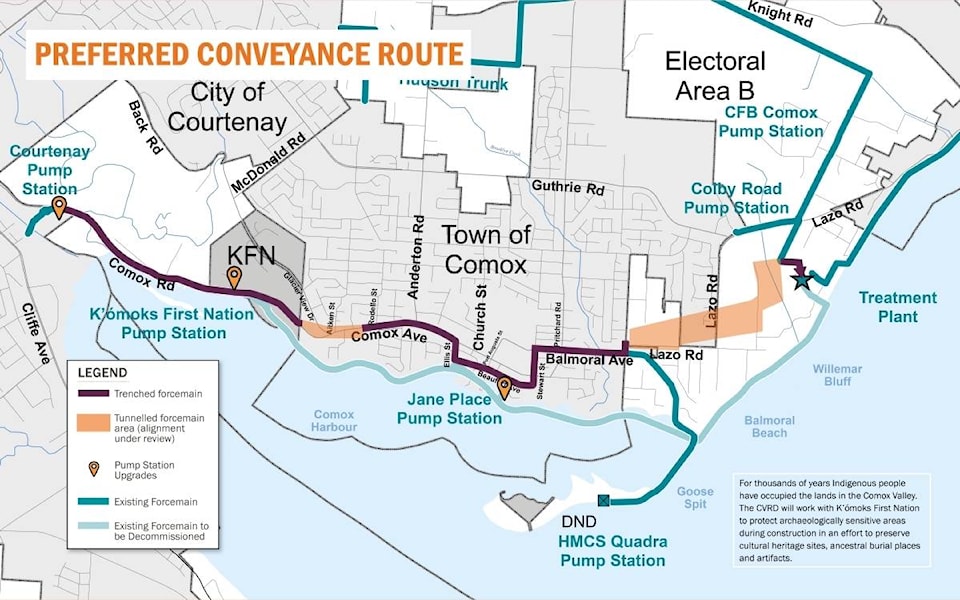The Comox Valley Sewage Commission approved a plan Tuesday to upgrade the pipes and pump stations that move wastewater from Courtenay, Comox and the K’ómoks First Nation (KFN) to the Sewage Treatment Plant. Planning and community engagement work has been underway since 2018 to develop a Liquid Waste Management Plan that will eliminate the environmental risk of moving raw sewage through an ‘at-risk’ pipe along the beach at Willemar Bluffs.
Key features of the selected route are:
•A mix of tunneled sections (under Comox and Lazo hills) with traditional ‘cut-and-cover’ trenched installation along Dyke Road and through the Town of Comox. Tunneling will minimize construction impact and operational pressure on the system, in order to reduce costs and risk over the life of the project.
•Work to be undertaken as one phase, to reduce operational risk by decommissioning aging infrastructure as soon as possible.
Final alignment will be determined during detailed design, and will focus on minimizing costs and impacts on residents and businesses. Discussions are underway with the Town of Comox regarding the final route, infrastructure replacement standards and community impacts. The Comox Valley Regional District will also work with the KFN to protect archeologically sensitive areas during construction in an effort to preserve cultural heritage sites, ancestral burial places and artifacts.
The project is anticipated to cost $73 million with an estimated 80-year service life for the new pipe. The cost per household is estimated at $150 per year for 30 years. Funding will include approximately $21 million from reserves and $52 million in debt to ensure costs are spread out between current and future taxpayers over the 30-year term. Public approval for borrowing will be sought through an Alternative Approval Process (AAP) in May and June.
“This is a critical decision, and the commission is thankful for the input from everyone who has participated in the consultation process,” commission chair Doug Hillian said. “The need to replace the at-risk forcemain along Willemar Bluffs is urgent – and now we have a plan that enables that work to move forward as quickly as possible and in a way that is affordable for taxpayers.”
This decision was supported by recommendations from staff, technical experts and the public – including the technical and public advisory committees formed to help guide the planning process. The commission also considered input gathered as part of the public consultation on a shortlist of three options completed last fall. A report summarizing that feedback is available at www.connectcvrd.ca/lwmp
The commission had already selected preferred treatment and resource recovery options for the system in December. Choosing the preferred conveyance option is the last in a series of key decisions for sewer planning for the Comox Valley sewer system. The next step will be to finalize the route alignment and detailed design for the new conveyance system, while funding is being secured through the AAP.
During this time, the CVRD will continue dialogue with stakeholders, residents with properties located in potential right-of-ways and homeowners with wells that will be included in a groundwater monitoring program.
FMI: www.comoxvalleyrd.ca/lwmp
